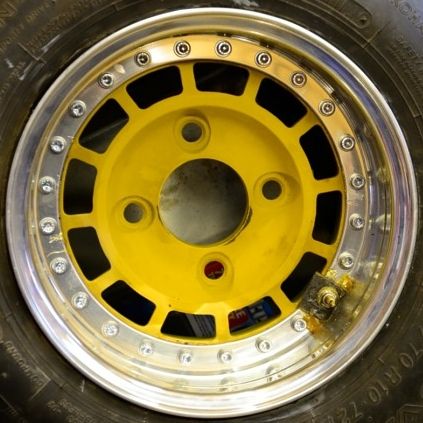| Page: |
| Home > Technical Chat > Reading Turbine Maps | |||||||
|
8604 Posts Member #: 573 Formerly Axel Podland |
11th Oct, 2007 at 01:03:24pm
OK, we seem to have got compressor maps well and truly sorted.
Edited by Paul S on 11th Oct, 2007. Saul Bellow - "A great deal of intelligence can be invested in ignorance when the need for illusion is deep."
|
||||||
|
8604 Posts Member #: 573 Formerly Axel Podland |
11th Oct, 2007 at 05:03:24pm
30 views and no replies!
Saul Bellow - "A great deal of intelligence can be invested in ignorance when the need for illusion is deep."
|
||||||
|
1303 Posts Member #: 30 Post Whore Epsom, Surrey |
11th Oct, 2007 at 05:07:43pm
1 view was me, but i'm thick as shit and had no idea, so didnt post. |
||||||
|
715 Posts Member #: 1381 Post Whore Doncaster, South Yorkshire |
11th Oct, 2007 at 06:51:30pm
Another view was me and I am still thinking about it.
|
||||||
|
Forum Mod 10980 Posts Member #: 17 ***16*** SouthPark, Colorado |
11th Oct, 2007 at 07:03:08pm
Well, I went off to find a link i found, and still haven't found it. Grrrrrrrr.....
On 17th Nov, 2014 Tom Fenton said:
Sorry to say My Herpes are no better Ready to feel Ancient ??? This is 26 years old as of 2022 https://youtu.be/YQQokcoOzeY |
||||||
|
81 Posts Member #: 934 Advanced Member halifax, west yorks |
11th Oct, 2007 at 07:21:35pm
according to this http://www.owendevelopments.co.uk/turbos/garrett-turbos.asp
|
||||||
|
8604 Posts Member #: 573 Formerly Axel Podland |
11th Oct, 2007 at 07:33:15pm
Thanks for your replies.
Saul Bellow - "A great deal of intelligence can be invested in ignorance when the need for illusion is deep."
|
||||||
|
8604 Posts Member #: 573 Formerly Axel Podland |
11th Oct, 2007 at 08:19:08pm
Well, he says that there is no mass change though combustion.
Saul Bellow - "A great deal of intelligence can be invested in ignorance when the need for illusion is deep."
|
||||||
|
Forum Mod 10980 Posts Member #: 17 ***16*** SouthPark, Colorado |
11th Oct, 2007 at 08:28:36pm
On 11th of Oct, 2007 at 08:19pm Axel said:
How I can convert the above into anything useful is still puzzling me. I hear That!!!! On 17th Nov, 2014 Tom Fenton said:
Sorry to say My Herpes are no better Ready to feel Ancient ??? This is 26 years old as of 2022 https://youtu.be/YQQokcoOzeY |
||||||
 4559 Posts Member #: 786 Post Whore Bermingum |
11th Oct, 2007 at 09:47:00pm
Hi,
VEMs Authorised Installer / Re-seller. K head kits now available!
|
||||||
 2406 Posts Member #: 341 aka T2clubby South Staffs |
24th Mar, 2009 at 05:08:08pm
Just been looking in to this and found a good thread about the subject here:
|
||||||
|
8604 Posts Member #: 573 Formerly Axel Podland |
24th Mar, 2009 at 05:19:42pm
Thanks.
Saul Bellow - "A great deal of intelligence can be invested in ignorance when the need for illusion is deep."
|
||||||
 2406 Posts Member #: 341 aka T2clubby South Staffs |
24th Mar, 2009 at 06:22:50pm
http://www.owendevelopments.co.uk/turbos/garrett-turbos.asp
|
||||||
|
8604 Posts Member #: 573 Formerly Axel Podland |
24th Mar, 2009 at 06:26:00pm
On 24th Mar, 2009 t2clubby said:
http://www.owendevelopments.co.uk/turbos/garrett-turbos.asp This has some useful formulae for correcting turbine flow as well. Bugger, I've just spent ages going through my old text books trying to find out how to correct the turbine flow. You must be working through the same calcs as me. Saul Bellow - "A great deal of intelligence can be invested in ignorance when the need for illusion is deep."
|
||||||
 2406 Posts Member #: 341 aka T2clubby South Staffs |
24th Mar, 2009 at 06:31:56pm
Yes probably, but yours will be correct lol |
||||||
|
8604 Posts Member #: 573 Formerly Axel Podland |
24th Mar, 2009 at 06:40:40pm
Actually, I reckon that guy on the diesel truck forum has got it wrong.
Saul Bellow - "A great deal of intelligence can be invested in ignorance when the need for illusion is deep."
|
||||||
 2406 Posts Member #: 341 aka T2clubby South Staffs |
24th Mar, 2009 at 07:06:13pm
I don't think he is allowing for pressure? he states
|
||||||
|
8604 Posts Member #: 573 Formerly Axel Podland |
24th Mar, 2009 at 07:17:21pm
I've come to the same conclusion.
Saul Bellow - "A great deal of intelligence can be invested in ignorance when the need for illusion is deep."
|
||||||
|
493 Posts Member #: 3894 Senior Member sallys gap. garden of Ireland |
24th Mar, 2009 at 07:44:24pm
On 24th Mar, 2009 t2clubby said:
I don't think he is allowing for pressure? he states "let's say that there's no backpressure in the manifold or that it's negligible." was he not just simplifying things a bit, regarding the turbine, assuming the exaust at low rpm would have low pressure after the wheel to demonstrate the need for pressure drop? im not good at this, but im new to it and trying to learn! I was able to follow the general jist of it and found it very interesting as an overview.# regards colin |
||||||
|
8604 Posts Member #: 573 Formerly Axel Podland |
24th Mar, 2009 at 08:13:11pm
On 24th Mar, 2009 1972-ANGUS said:
was he not just simplifying things a bit, regarding the turbine, assuming the exaust at low rpm would have low pressure after the wheel to demonstrate the need for pressure drop? I think you are right. However, he was still using quite a high temperature that would have given misleading results. Anyway, I've just worked out that on my 1293 with the GT2056 it should be capable of developing around 15 psi boost by 4000 rpm. That is based on a gas flow through a 1293 at 4000 rom at 15 psi is around 11 lb/min. Correcting the 11 lb/min gives 10.1 lb/min. At a flow of 10 lb/min and a PR of 2, the turbne curve is just flattening out and is therefore spooled up. 
Would that be correct? Saul Bellow - "A great deal of intelligence can be invested in ignorance when the need for illusion is deep."
|
||||||
|
493 Posts Member #: 3894 Senior Member sallys gap. garden of Ireland |
24th Mar, 2009 at 08:16:28pm
Sooo, how wrong would i be to say that running too rich under boost, has the effect of not creating as much pressure at the turbine due to lower exaust temp, thus increasing lag to an extent??
|
||||||
|
8604 Posts Member #: 573 Formerly Axel Podland |
24th Mar, 2009 at 08:20:21pm
On 24th Mar, 2009 1972-ANGUS said:
Sooo, how wrong would i be to say that running too rich under boost, has the effect of not creating as much pressure at the turbine due to lower exaust temp, thus increasing lag to an extent?? and would that create a less steep curve on a diagram? I would have thought that a lower exhaust temp due to running over rich would be detremental to the performance of the turbo. The curve shown is a feature of the turbo so would be unaffected. Saul Bellow - "A great deal of intelligence can be invested in ignorance when the need for illusion is deep."
|
||||||
|
493 Posts Member #: 3894 Senior Member sallys gap. garden of Ireland |
24th Mar, 2009 at 08:40:01pm
yes indeed,
|
||||||
 2406 Posts Member #: 341 aka T2clubby South Staffs |
24th Mar, 2009 at 11:11:08pm
But surely running rich would increase the initial flow figure due to the fuel content? Maybe enough to ofset the cooling effect?
|
||||||
|
1267 Posts Member #: 831 Post Whore Montreal, Canada |
24th Mar, 2009 at 11:27:25pm
First let me say I know nothing about turbine maps. But if I look at the curve shown and using Paul's numbers, does that mean that the turbine becomes a significant restriction at 4000RPM and that either the wastegate has to start opening or the backpressure will increase?
|
||||||
| Home > Technical Chat > Reading Turbine Maps | |||||||
|
|||||||
| Page: |


